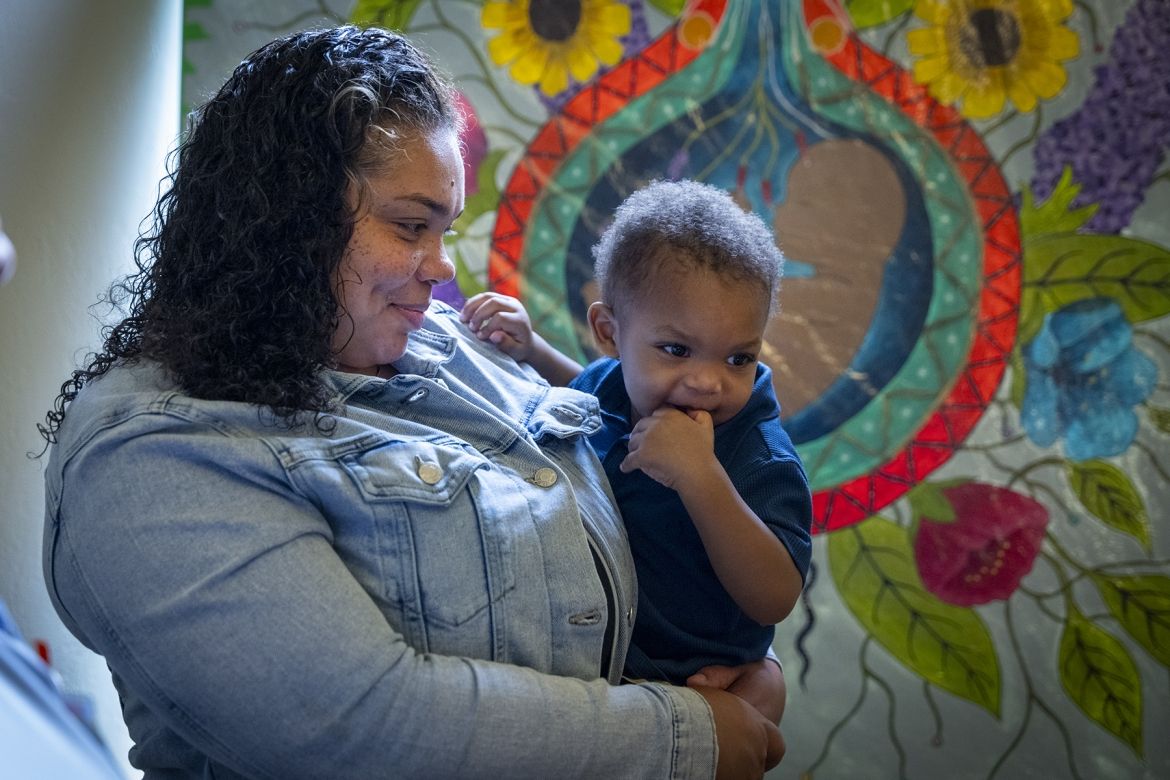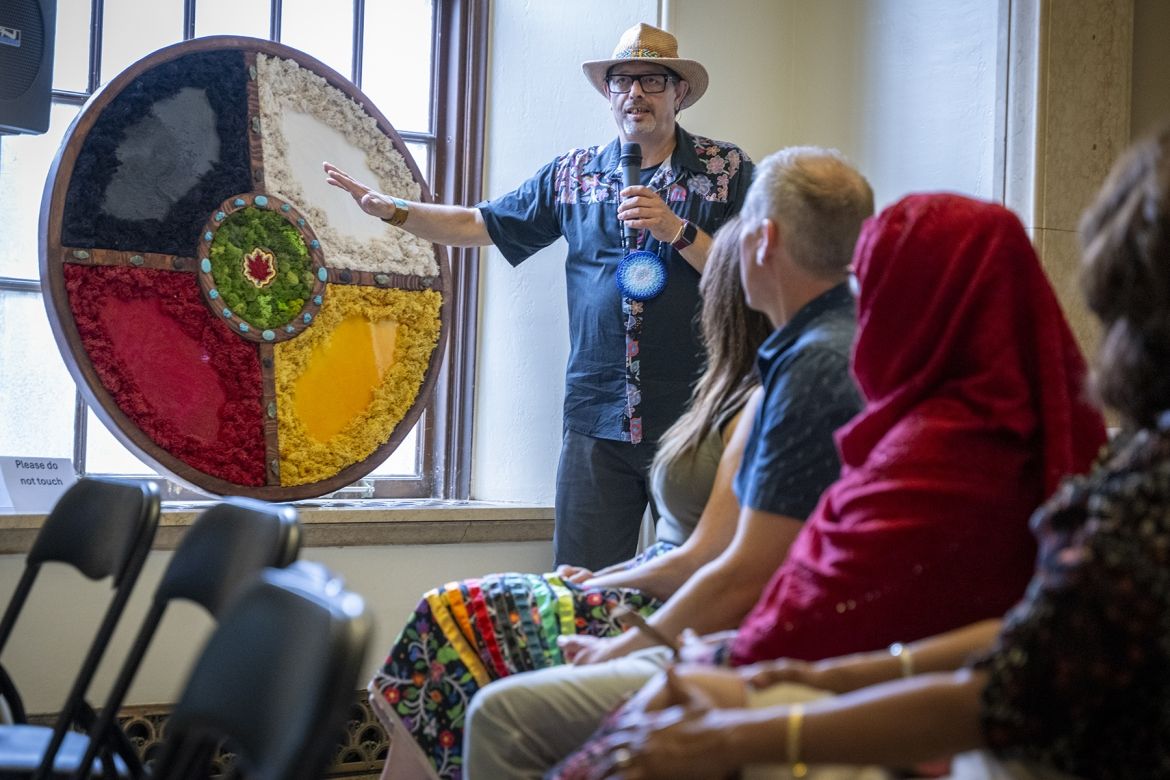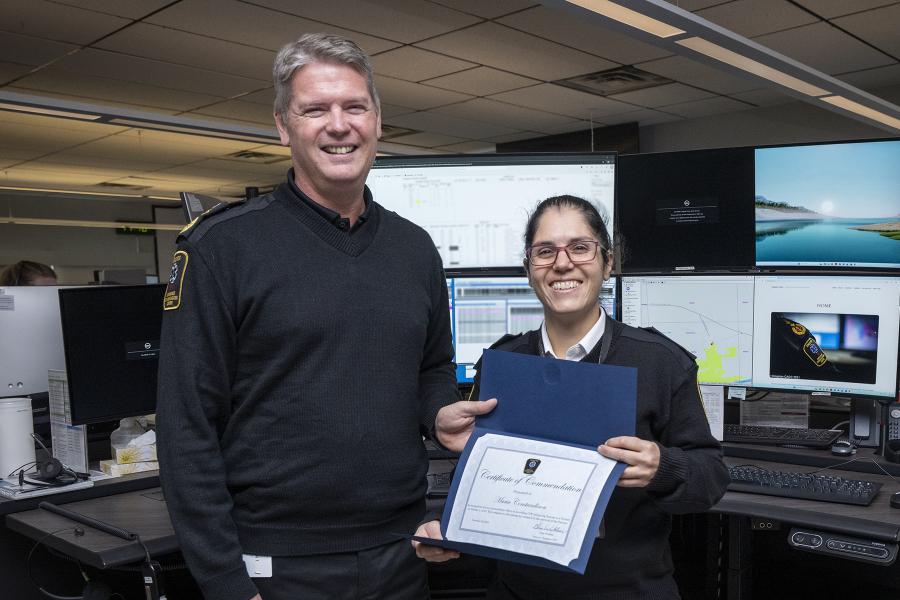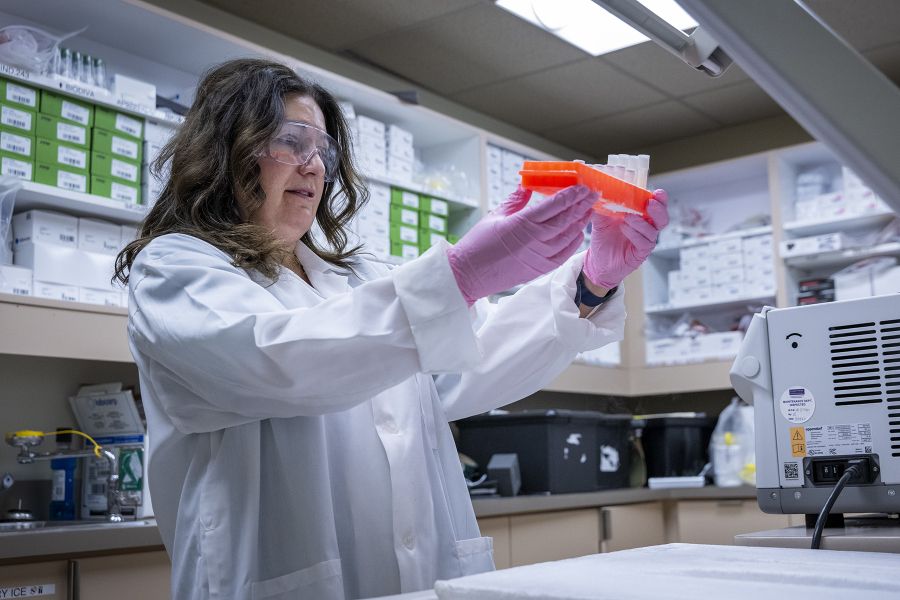Effective immediately masking is required for everyone when present on all inpatient units, in the Emergency Department (ED), the Urgent Care Centre (UCC), and the Children’s Outpatient Centre (COPC).

Kingston Health Sciences Centre (KHSC) and the South East Regional Cancer Program have unveiled three new commissioned pieces of art by Indigenous artists as part of the Indigenous Spaces and Places in Health Care Initiative, collaborative effort led by the Frontenac, Lennox & Addington Ontario Health Team (FLA OHT), Kingston Community Health Centres (KCHC), and Three Things Consulting.
Recognizing the importance of Indigenous culture and presence in health-care environments, and as part of broader efforts to respond to the Truth and Reconciliation Commission’s Calls to Action, the initiative has focused on incorporating Indigenous artwork within health-care spaces across the region. This artwork serves as a reminder that reconciliation in health care must be ongoing, rooted in meaningful representation and sustained by efforts to honour Indigenous knowledge, support cultural healing practices, and foster culturally safer environments.
“The initiative has given us an opportunity to do something symbolic, but also very real. These three pieces of art will help us to hold space for Indigenous identity, knowledge, and ceremony. They’re a visible and powerful reminder of the work we are doing—and still need to do—to advance inclusion and reconciliation,” shared Dr. David Pichora, KHSC President and CEO.
KHSC is one of six locations in the region selected to participate in the initiative.
“We are grateful to the Indigenous Spaces and Places in Healthcare program for its vision, and to the artists who are sharing their culture and gifts with us. This is an important step in a longer journey—and one we are proud to walk together,” shared Sherri McCullough, KHSC Board Chair.
Initiative brings Indigenous worldviews and teachings into local health-care settings
The initiative recognizes and celebrate Indigenous worldviews of health. It also aims to build relationships with local Indigenous artists, knowledge keepers and Elders.
“This unveiling is more than the celebration of a beautiful piece of art—it’s a step forward in our shared journey toward reconciliation and health equity. Through this Indigenous-led initiative, and with the support of KHSC, we are reminded that representation in health care spaces matters. At the FLA OHT, we are honoured to walk this path alongside our partners and the incredible artists who’ve shared their gifts and teachings,” shared Dr. Kim Morrison, Executive Lead, FLA OHT. “This work inspires us to keep listening, keep learning and keep striving for care that truly reflects and respects the people we serve and take steps toward reconciliation and health equity.”
A group of Indigenous artists from Tyendinaga, Napanee and Kingston were engaged to create artwork that will be installed in several health-care locations across the region. Each piece includes a teaching or information to help improve health equity.
Artwork brings Indigenous knowledge, healing and culture into hospital spaces
As part of the application process, the art was selected by KHSC and the South East Regional Cancer Program, along with members of the South East Indigenous Cancer Council and the KHSC Indigenous Staff Community Group. Three pieces were ultimately selected – artist Chanelle Blair’s - sikkersoq, Jaylene Cardinal and Dakota Ward’s - The Medicine Connection, and Mance Granberg’s - 7 Spheres.
- Chanelle Blair is a Toronto-based Black and Inuit artist whose work is deeply inspired by her heritage, nature, and life experiences. She spent a formative year in Brandon, Manitoba, where she connected with her Inuit roots and learned survival skills in the Arctic tradition. A lifelong creative, Blair uses art as a means of self-expression and cultural storytelling. She has contributed powerful murals for Black History Month, including tributes to Jamaican pride and influential Black historical figures. Through her vibrant and meaningful work, Blair shares her journey and identity with the world.
“I want this artwork to show the connection between mother, child, and nature, reflecting the Indigenous view of health as a balance of physical, emotional, mental, and spiritual well-being. It is anchored in blooming, or sikkersoq, in Inuktitut. My hope is that it will remind patients, volunteers, and staff of the strength found in family, community, and ancestral teachings, connecting traditional wisdom with modern healing,” she said.

- Mance Granberg is a two-spirit Wolastiquiyik/Abenaki artist from Quebec, with Gill and St. Aubin family lines. A former nurse with 22 years of experience, Granberg’s journey has been shaped by resilience and a deep commitment to healing. After growing up in foster care and being denied a chance to study graphic design, a renewed creative path emerged following the discovery of unmarked graves at a residential school site. Granberg’s art focuses on the healing power of culture and emphasizes connection to community, spirituality, and Mother Earth.
“7 Spheres which hold the images of the animals that represent the 7 Sacred Teachings. All connected to each other, each sphere will be a “turtle” to represent our Creation story, Turtle Island. Inside them “will be a stethoscope” to represent the incorporation of Western medicine and guiding teachings/principles of the 7 Sacred Teachings. The background is water in which they are floating, as this water is the most important of all medicines in which all life is sustained.”
- Jaylene Cardinal and Dakota Ward are Kingston-based Indigenous artists and founders of W.C. Creatives, a business offering jewelry, fashion, crafts, foods, and expressive visual art. Originally from Edmonton, they moved to Kingston in 2014 with the belief that art can create a more understanding, joyful, and connected world. Their storytelling artwork has been featured in the City of Kingston's public art at Rideau Heights Community Centre and the award-winning Waawaateg exhibit. They also designed the Kingston Frontenacs Indigenous Peoples Night jersey logo. In February, their work was showcased in the Spirit of Winter event in downtown Kingston.
“This moss art medicine wheel symbolizes healing, balance, and connection, perfect for a medical center. The metallic gold frame represents strength and unity, while the four quadrants—featuring moss in red, yellow, black, and white—symbolize the four directions and pathways to wellness. At the center, sweetgrass and sage represent purification and spiritual grounding. The shiny, flowing resin with mica powder adds a reflective, spiritual touch, inspiring harmony and peace. This piece is a modern reflection of traditional healing.”

New installations create culturally safer spaces across KHSC sites
The artwork will be displayed in prominent areas across both hospital sites, including the Mamawi Room—a welcoming space that Indigenous patients and families receiving care at KHSC can use for cultural practices.
“For Indigenous patients, families, staff, and visitors, seeing themselves reflected at KHSC sends a powerful message—You are welcome. Your ways of healing are respected,” shared Heather Bullock, Executive Vice President, People, Mission and Partnerships Kingston Health Sciences Centre.
“This art is a reminder of our commitment to learning from Indigenous voices and creating culturally safer environments through meaningful action.”



